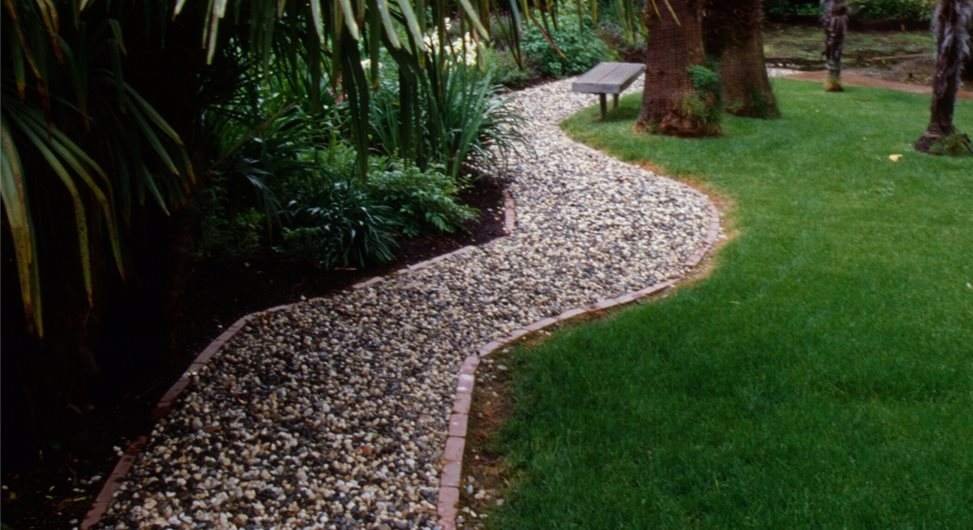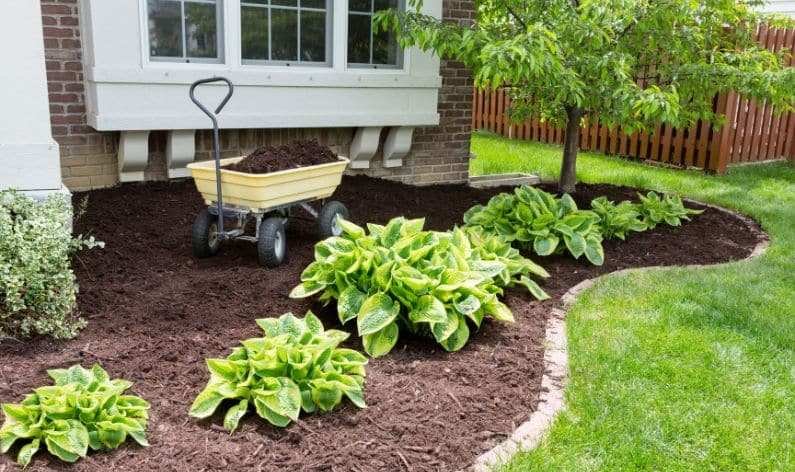Getting ready for a landscape installation can be exciting, but proper preparation is key to a successful project. Whether you’re installing new plants, trees, or hardscaping features, prepping your yard helps ensure everything thrives. Evergreen Landscaping of Cincinnati is here to help you make the most of your outdoor space. Start by clearing away debris and weeds, then check the soil quality to ensure it’s nutrient-rich. Grading the land is crucial for proper drainage, and planning the layout will help your vision come to life. With the right prep, your landscape will flourish for years to come!
Landscape installation is one of the most rewarding ways to enhance your outdoor space, bringing beauty, function, and value to your property. Whether you’re dreaming of a lush garden, a new patio, or a well-designed yard that combines plants and hardscaping, proper yard preparation is essential for a successful project. Before jumping into the installation process, there’s quite a bit to do to get your yard ready. Don’t worry—it’s not as overwhelming as it sounds! Here’s a step-by-step guide to help you prepare your yard for landscape installation, ensuring everything goes smoothly and looks amazing.
1. Assess Your Yard’s Current Condition
The first step is evaluating what you’re working with. Walk around your yard and take note of any existing features, including plants, trees, drainage patterns, and slopes. Identify areas that might need special attention, such as compacted soil, poor drainage, or dead patches of grass. This assessment will help you create a game plan for what needs to be done before any new plants or structures are installed.
Additionally, think about what you want to keep or remove. If there are trees or shrubs you’d like to keep, protect them from potential damage during the installation process. If there are any old or unwanted plants, consider removing them to clear the way for new growth.
2. Clear Out Debris and Weeds
Clearing out debris and weeds is the first step in preparing your yard for landscaping. Remove dead plants, leaves, sticks, and any unwanted growth to create a clean, open space for your new design. Weeds should be carefully pulled out or treated to prevent them from competing with new plants for water and nutrients. For a thorough job, consider hiring Landscaping Services to handle the debris removal and weed control efficiently, ensuring your yard is ready for a beautiful transformation.
Before you start working on the landscape design, it’s important to clear out any debris and weeds. Remove old plants, dead leaves, sticks, and anything else that might interfere with your new landscape installation. Weeds, especially, need to be handled properly, as they can quickly spread and compete with your new plants for nutrients and water.
You may want to use weed removal techniques such as hand-pulling, using a hoe, or applying eco-friendly herbicides. For large areas, sheet mulching (placing layers of cardboard or newspaper over the weeds and topping them with mulch) can smother weeds and improve the soil for future planting.
3. Test and Improve Soil Quality
Soil is the foundation of any landscape, so ensuring that it’s healthy and fertile is critical. Good soil provides the nutrients and support plants need to thrive, while poor soil can lead to weak growth and frustration.
Start by testing your soil to understand its pH level and nutrient content. You can purchase a soil test kit from a garden center or have it professionally tested. The test will tell you whether your soil is too acidic or too alkaline and whether it lacks essential nutrients.
Once you know the condition of your soil, you can amend it to improve its quality. If the soil is too acidic, adding lime can balance the pH. If it’s too alkaline, sulfur can help. You may also need to add organic matter, such as compost or manure, to improve the soil’s texture and nutrient content.
4. Plan for Proper Drainage

Water management is key to a healthy landscape. Poor drainage can lead to soggy soil, plant diseases, and even structural damage to your home if water pools near the foundation. Before installing any new features, make sure your yard has proper drainage.
Here are a few ways to improve drainage:
Grading:
This involves sloping the land away from your home to encourage water to flow toward designated drainage areas.
French drains:
These are underground pipes designed to carry excess water away from wet spots.
Dry creek beds:
These decorative, shallow trenches filled with rocks can direct water flow and prevent erosion.
Rain gardens:
These are strategically placed gardens designed to absorb and filter excess rainwater.
A proper drainage system will ensure that your landscape stays healthy and that you won’t have to deal with standing water or erosion issues down the road.
5. Grade Your Yard
Grading your yard involves leveling or sloping the ground to ensure proper drainage and prepare for new landscaping features. Consider factors such as the existing slope, soil type, and drainage patterns to prevent water pooling and erosion. When designing a landscape, also factor in sunlight exposure, plant needs, and aesthetic preferences. Landscaping Services can assist with grading and design, ensuring your yard’s functionality and beauty align with your vision and environmental conditions.
Grading, or leveling your yard, is an essential part of landscape preparation, especially if you’re installing hardscaping features like patios, walkways, or retaining walls. Proper grading not only ensures smooth installation but also helps with water drainage.
Here’s how to approach grading:
Level uneven areas:
Use a shovel or landscape rake to level out high spots and fill in low spots.
Slope away from structures:
When grading near your home or other structures, make sure the slope directs water away from the foundation. Typically, a 1–2% slope is recommended.
Hire a professional:
If your yard requires significant grading or excavation, it may be best to hire a landscaping contractor to ensure the job is done correctly.
6. Map Out Your Layout
Before any planting or building begins, it’s important to have a clear plan for your landscape. This is the fun part—where your vision starts to take shape! Whether you’re working with a landscape designer or doing it yourself, creating a layout will help you visualize the final outcome.
Start by sketching your yard and mapping out where various elements will go. Consider where you want plants, trees, hardscaping, and other features like a patio, fire pit, or garden beds. Think about factors like sunlight, shade, and how the layout will fit with the natural flow of your yard.
If you’re unsure of where to start, consult with professionals like Evergreen Landscaping of Cincinnati. Their expertise can help you design a layout that maximizes your space and brings your dream landscape to life.
7. Lay the Groundwork for Hardscaping

If your landscape installation includes hardscaping (patios, pathways, retaining walls, etc.), it’s best to handle these features before planting any greenery. Hardscaping requires digging and construction, which can damage plants if done after the fact.
Whether you’re pouring concrete, laying pavers, or building structures, make sure to follow proper installation procedures. It’s always wise to consult professionals for large hardscaping projects, as proper installation is crucial for long-term durability.
8. Fertilize and Mulch
Fertilizing your new landscape gives it the boost it needs to grow strong and healthy. Depending on the plants you choose, you may need to apply different types of fertilizer, such as organic compost or slow-release fertilizers.
After fertilizing, adding a layer of mulch around your plants helps keep the soil moist and prevents weed growth. It also gives your landscape a polished, finished look.
9.Maintain and Enjoy Your New Landscape
Maintaining and enjoying your new landscape involves regular tasks like watering, fertilizing, and pruning to keep everything healthy and beautiful. Periodic inspections help identify any issues before they become major problems. To keep your landscape looking fresh and up-to-date, consider Landscaping Renovations Services. These professionals can assist with updating features, enhancing plant health, and making adjustments as needed to ensure your outdoor space remains inviting and well-maintained over time.
Now that your landscape is installed, the key to long-term success is maintenance. Regular watering, fertilizing, pruning, and weeding will help keep your yard looking its best. Set up a routine maintenance schedule or hire a professional landscaping service to keep everything in top shape.
By preparing your yard correctly and investing time in the process, you can enjoy the beauty and benefits of your new landscape for years to come. Whether you’ve installed lush greenery, built a new patio, or created a cozy outdoor retreat, your hard work will pay off.
And remember, Evergreen Landscaping of Cincinnati is always here to assist you with expert advice, landscape installation, and maintenance services. Happy landscaping!
FAQs
How to prepare the ground for landscape?
To prepare the ground for landscaping, start by clearing any debris, weeds, and old plants from the area. Test and amend the soil for proper nutrients and pH balance, and ensure the ground is leveled or graded to promote good drainage. Finally, plan your layout, install any irrigation systems, and prepare the soil for planting or hardscaping.
What are the steps involved in landscape planning?
Landscape planning involves assessing the space by evaluating existing features, soil quality, and drainage patterns. Next, create a design layout by selecting plants, hardscaping elements, and determining placement based on sunlight, water needs, and aesthetics. Finally, establish a maintenance plan and consider irrigation or drainage systems to ensure long-term success.
How do you prepare a yard?
To prepare a yard, start by clearing out debris, weeds, and any unwanted plants. Improve the soil by testing and amending it with compost or other organic materials, ensuring it’s ready for planting. Lastly, grade the yard for proper drainage, and install any necessary irrigation systems before beginning landscaping.
How to landscape step by step?
To landscape step by step, first assess the yard by clearing debris, testing soil, and ensuring proper drainage. Next, create a design layout that includes plant selection and hardscaping elements, considering sunlight, water needs, and aesthetics. Finally, install any irrigation systems, plant trees and shrubs, and finish with mulching or ground cover to complete the project.
What are the 4 parts of a landscape?
The four main parts of a landscape are the hardscape, which includes structures like patios, pathways, and walls; the softscape, which consists of plants, trees, and lawns; lighting, which enhances visibility and ambiance; and water features, such as ponds or fountains, that add a soothing element. Together, these components create balance and functionality in outdoor spaces. Each part contributes to both the aesthetics and the practicality of the landscape design.
Conclusion
Preparing your yard for landscape installation is a crucial step that sets the foundation for a beautiful and thriving outdoor space. By taking the time to assess your yard, improve soil quality, ensure proper drainage, and plan the layout, you’re setting yourself up for success. Once the hardscaping is in place and plants are chosen and properly installed, maintaining your new landscape becomes a manageable task. With thoughtful preparation, your yard will not only look stunning but also be easier to maintain and enjoy. And if you need expert help, **Evergreen Landscaping of Cincinnati** is here to support you every step of the way!
